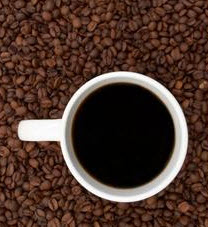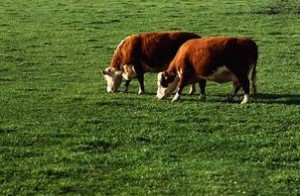 It’s my favorite time of year! Not just because the weather is finally warming up but because it is time for the Environmental Working Group’s annual release of the Dirty Dozen and the Clean 15 fruits and vegetables. As we turn the corner, (finally!) toward Spring, it’s a perfect time to talk about choosing the fruits and vegetables and the tradeoffs between your health and your finances.
It’s my favorite time of year! Not just because the weather is finally warming up but because it is time for the Environmental Working Group’s annual release of the Dirty Dozen and the Clean 15 fruits and vegetables. As we turn the corner, (finally!) toward Spring, it’s a perfect time to talk about choosing the fruits and vegetables and the tradeoffs between your health and your finances.
As a result of the diminished nutrient profiles in foods due to modern farming practices, we need to eat more fruits and vegetables than ever. You may remember a prior article in which I shared research that to get the same level of nutrients from two peaches eaten back in the 1950’s, today you’d have to eat 53!
We are all trying to make our money in this tough economy stretch as far as it can, so it’s good to know that there is some produce that you can buy conventionally grown; being able to purchase it at your regular store or when it’s on sale means you can really save some money. Other fruits and vegetables, however, absolutely should be bought organic, as it’s worth every penny of the investment in your health to avoid the toxic pesticides they contain.
Every year, the Environmental Working Group, or EWG, releases a list of the 12 most contaminated fruits and vegetables known as The Dirty Dozen. They also provide a list of the Clean 15 that you can feel safe about buying conventionally grown. The list changes every year as some dirty produce does get cleaned up and some clean produce begins to show signs of pesticides.
Everything not on one of these two lists is a use-your-best-judgment call: buy organic if and when you can, especially if it’s something you don’t peel. The more important avoiding pesticides is to you, the more items on the “in- between list” (meaning anything not found on either of the two lists that follows below), you’ll probably want to look for organic.
If it’s not a big priority for you at the moment vs. other health considerations, if you don’t have growing children, if you cannot afford it or it’s not a regular purchase, it’s ok to consume the conventional produce on the “in-between list” periodically as long as you wash it well or don’t eat the skin.
To the extent that you can, buy local and support your small farms whenever possible especially if buying conventional; the further food travels, the more it will be sprayed to ensure it makes the journey without spoiling and the less time it’s allowed to ripen and reach nutritional maturity.
The Clean 15 (These can be bought conventionally grown if you’re watching your expenses.)
Avocados
Sweet Corn
Pineapple
Cabbage
Sweet Peas –Frozen
Onion
Asparagus
Mango
Papaya
Kiwi
Eggplant
Grapefruit
Cantaloupe
Cauliflower
Sweet Potatoes
It’s important to note that most genetically modified produce such as corn and soy is used to make packaged goods and doesn’t end up in the produce aisle. Some produce will be labeled with a sticker that begins with the number 8, which indicates it’s genetically modified and should always be avoided, but it’s not a requirement and so most produce will not have such clear markings.
According to the EWG, small amounts of GMO Produce such as zucchini, papaya and sweet corn do make their way onto the shelves. If avoiding genetically modified foods is a priority to you, these should also be bought organic, even though papaya and corn make the “clean” list as far as pesticides go. (While we love an occasional sweet corn on the cob, because corn is so pervasive in foods these days, we limit it to a couple times a season, really enjoy it when we do, and always buy it organic even though it’s on the clean list.)
The Dirty Dozen (ALWAYS buy organic)
Apples
Strawberries
Grapes
Celery
Peaches
Spinach
Sweet Bell Peppers
Nectarines – Imported
Cucumbers
Cherry Tomatoes
Snap Peas – Imported
Potatoes
Plus
Kale and Collard Greens
Hot peppers
The first thing you’ll notice about The Dirty Dozen is that many of these are the fruits and vegetables your kids or grandkids eat most. The impact of the pesticides will be even greater upon their developing bodies and because they eat from this group regularly, it’s even more important to invest in organic options if there are kids involved. (And keep in mind, this means products made from these fruits as well such as apple or grape juice, and apple sauce, etc. These should be purchased organic as well.)
More and more stores are adding organic produce; these are the fruits and veggies to look for wherever you shop and make it a rule to invest in organic versions. Trader Joes is pretty good at stocking these if you have access to one nearby, but even there, it’s hit or miss. There are many times of the year I cannot get organic apples for my kids’ lunches and so we have to switch to something else until they come in because I will not buy conventional.
If you cannot find fresh organic versions of the Dirty Dozen, look for frozen organic strawberries, spinach or peppers. If you can’t get organic peaches or nectarines, try plums or another fruit on the clean or in-between list and wash it really well with fruit and veggie wash if you’ll be eating the peel. (Conventional or organic, clean, dirty or in-between, always wash your produce with a fruit and veggie wash and never eat any fruits or vegetables until you have!)
Also try visiting local farms or farmers markets and talking to the farmers. Many smaller farms follow organic farming practices but cannot afford the time and expense of applying for organic certification. Again, even if not certified organic, local produce will have more nutrients and is a better choice than heavily sprayed conventional produce that travels from far away.
Finally, last year, the Dirty Dozen list had some additions that didn’t meet the full criteria but were commonly found to have toxic pesticide contamination. This year, two vegetables made their “plus” list: hot peppers and leafy greens such as kale and collards.
These vegetables show pesticide residues of organochloride pesticides that are toxic to the nervous system and as a result have been phased out of agriculture. They make the list because residues still linger in farm fields and have been found on conventional produce sold in stores, so these should also be purchased as organic.
Last year, domestically grown summer squash such as yellow crookneck squash and zucchini made the plus list too. But this year they have removed it from the highest level of danger list, finding pesticide levels to have improved.
As produce season gets under way, enjoy the 9-13 servings per days of fruits and vegetables your body requires for optimal health, but invest in the best form you can of the dirty dozen and you can save some pennies on the rest!
To your wellness and health: your true wealth!
Inger
Author: Inger Pols is the Editor of the New England Health Advisory and Author/Creator, Finally Make It Happen, the proven process to get what you want. Get a free special report on The Truth About Sugar: It’s Not All Equal and a free copy of Inger’s bestselling ebook at www.IngerPols.com/freegifts
Photo Source: courtesy of SOMMAI / Free Digital Photos

 After the article I wrote on
After the article I wrote on  Each year, almost a billion pounds—or nearly three pounds per person—of pesticides are sprayed across the U.S. Before herbicides and pesticides were introduced 57 years ago, 37% of our crops were being lost to pest damage. Today, despite the pervasiveness of pesticide use, pests are destroying MORE than 37% of our crops.
Each year, almost a billion pounds—or nearly three pounds per person—of pesticides are sprayed across the U.S. Before herbicides and pesticides were introduced 57 years ago, 37% of our crops were being lost to pest damage. Today, despite the pervasiveness of pesticide use, pests are destroying MORE than 37% of our crops.
 With all the press lately around pink slime and now the new study about the health impacts of red meat, let’s talk about making better meat choices.
With all the press lately around pink slime and now the new study about the health impacts of red meat, let’s talk about making better meat choices. Getting the right info on buying the best fruits and vegetables is as important as ever, so I want to answer some of the questions people ask me regularly about making healthy fruit and vegetable choices, such as: when is it worth splurging on organic if my budget is tight? Is frozen better than canned? Do I need to wash everything, even if it has a skin? And, how do I decide between local and organic?
Getting the right info on buying the best fruits and vegetables is as important as ever, so I want to answer some of the questions people ask me regularly about making healthy fruit and vegetable choices, such as: when is it worth splurging on organic if my budget is tight? Is frozen better than canned? Do I need to wash everything, even if it has a skin? And, how do I decide between local and organic?
 Follow me on Twitter
Follow me on Twitter 